Audio Note DAC3.1x/II Balanced by Terry London
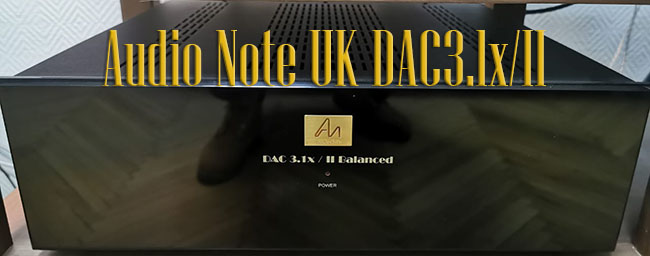
 I’ve been on an odyssey the last three years when considering how many DACs (twelve in total) I have had in-house for review. These units have ranged in price from $1,000 up to $45,000. Two of these DACs (which will remain anonymous) had received rave reviews and were in the upper stratosphere regarding price, which turned out to be my least favorite (and I declined to write a professional review about them). After this lengthy experience, I concluded that Sigma Delta technology used in current DAC chips does not sound as natural and musical as resistor ladder technology (R-2R). My favorite DACs also use tubes in the analog conversion section and are tube rectified in the power supply. The one exception was the wonderfully musical and beautifully built Bricasti Design M3 DAC based on a Sigma Delta design. I sang its praises in a previous Stereo Times review.
I’ve been on an odyssey the last three years when considering how many DACs (twelve in total) I have had in-house for review. These units have ranged in price from $1,000 up to $45,000. Two of these DACs (which will remain anonymous) had received rave reviews and were in the upper stratosphere regarding price, which turned out to be my least favorite (and I declined to write a professional review about them). After this lengthy experience, I concluded that Sigma Delta technology used in current DAC chips does not sound as natural and musical as resistor ladder technology (R-2R). My favorite DACs also use tubes in the analog conversion section and are tube rectified in the power supply. The one exception was the wonderfully musical and beautifully built Bricasti Design M3 DAC based on a Sigma Delta design. I sang its praises in a previous Stereo Times review.
I was, as they say, “DAC-ed out” and decided that it would be quite a while before I would review another digital piece. Well, my dear friend Mike Kay, owner of Audio Archon, which carries some of the highest regarded lines on the market today, invited me over to hear what he calls his “baby” all-Audio Note (UK) system. Based on my past experiences with complete Audio Note systems, I knew I was in for a sonic treat. However, the beauty of the tonality and spaciousness that just effortlessly poured out of these corner-loaded speakers was an even bigger sonic treat. The DAC used in this system was the 2.1x Signature, which retails for $6,664, and piqued my interest to hear and review the next level DAC3.1/II Balanced, which is priced at $12,068. I run balanced sets of electronics (Coda & SPL) in my reference system. I wanted to review Audio Note’s truly balanced level 3 DAC to get the advantages, overall dynamics, and reduction of any background noise, which it could offer in the context of my system, along with the extraordinary musicality of its single-ended “baby brother” 2.1x Signature’s performance. 
The founder of Audio Note (UK) in 1998, Peter Qvortrup, has always been an iconoclastic figure in the world of high-end audio. Mainly, regarding digital reproduction, his ears found up/oversampling, re-clocking, and the type of filters used with these formats sounded unnatural to his experience of real music. All these corrective interventions on the bit-stream might measure objectively with more accuracy but greatly interfere with the critical time domain requirements of the signal. Music is a time continuum from beginning to end, which, when broken, is irreparably damaged. No amount of clever manipulation can restore it to its original time/frequency/amplitude duration or relationship, regardless of what the designer attempts to do. Digital filters and the associated over/upsampling had been broadly discussed, analyzed, and criticized, but what no one had done at that time was to remove them altogether, to see what their real effects on ultimate sound quality would be. So, that’s exactly what Mr. Qvortrup and his team decided to do, and the results were dramatic. Therefore, Audio Note combines purely analog filters (dubbed 1x oversampling direct from disc technology) with the finest components and materials available, including transformer interfaces and the highest quality vacuum tube circuitry to produce a range of DACs that are both refreshingly lifelike and free from conventional digital restraints and mechanical artifacts as far as I can tell Mr. Qvortrup and his co-designers are not against objective measurements. However, he has pointed that two pieces of stereo equipment can measure the same yet sound completely different to the same listener. It’s not that he does not care about measurements/testing, but Audio Note’s equipment must render music the way he and others on his staff experience the beauty and emotion of music.
The following quote, I think, is remarkable and sums up why he’s such a “controversial” figure to some in the audio industry:
“The golden rule of audio design, in my opinion, is that it is impossible to improve the original signal as cut by the lathe or encoded on the CD, all we can do is design equipment with circuits that alter the frequency-energy relationships as little as possible, and this requires engineers to abandon their biases and design themselves out of the equation, and that my friends is not a simple task by any means!”
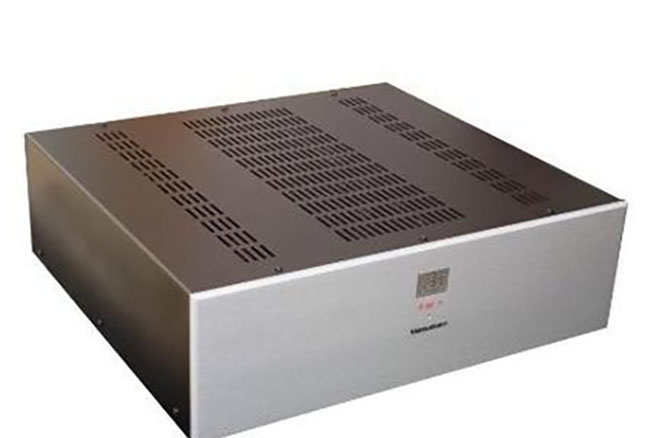
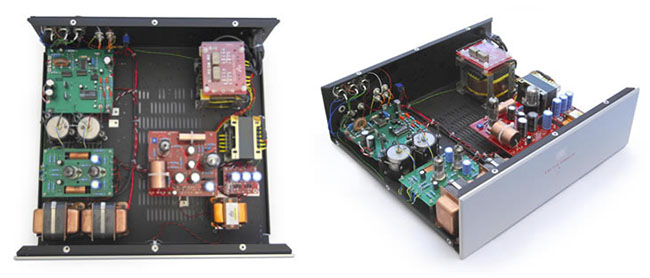
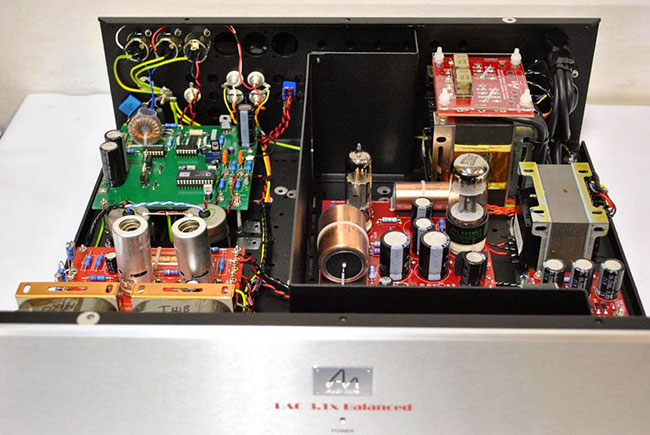
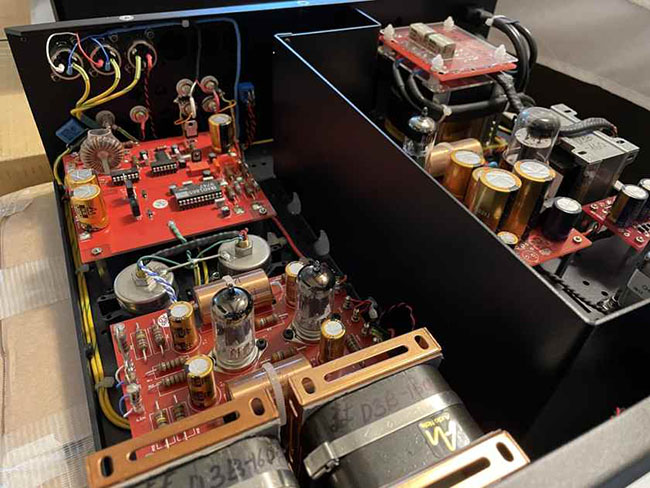
The Audio Note DAC3.1x/II dimensions are 17.7 inches in width, 16.7 inches in depth, and 5.7 inches in height. It weighs a robust 49 pounds. On the front is a thick black acrylic panel with a centered Audio Note badge and engraved lettering with the DACs name. Around the back are the on/off switch, RCA/XLR inputs, RCA/XLR outputs, and the IEC input. I found the physical appearance of the DAC3.1x/II to be quite elegant in an understated fashion. The tube complement is composed of a pair of 5814 tubes, one ECL82, and one 6X5. The tubes that audio Note ships with are good NOS tubes, but I knew I could even get to a higher level of performance, putting in my favorite personal tubes. So, I rolled in a pair of NOS Sylvania Gold Brand 5814A gold pin, a NOS Siemens ECL82, and a NOS 6X5 Bendix. Yes, the DAC sounded superlative with its stock tubes, as you will see in the next section on its performance. Still, it went to even loftier heights of musicality and purity of tonality/timbres with these tubes inserted.
The Audio Note DAC3.1x/II Balanced has no oversampling, no analog filtering, no jitter reduction, no noise shaping, and no re-clocking. All filtering is done in the analog domain by the specially designed I/V transformer, which does two jobs; match and convert the current coming out of the chip to voltage while simultaneously acting as a high-pass filter, making it easier to retain good, wideband phase-frequency and dynamically coherent behavior. It uses the highest-grade Analogue Devices AD1865 (44.1/48/96Khz input capability), 18-Bit stereo converter chip solely because Audio Note found it to be the best sounding available. All the filter-interface coils/transformers are of exceptionally high quality and custom-designed and manufactured in-house by Audio Note. Audio Note has the international patent on the use of a transformer I/V coupled directly to the output of the multi-bit AD1865 and has spent years refining this interface to optimize sonic behavior.
Of all the experiences I have had listening to and reviewing a new piece of equipment through the years, the Audio Note DAC3.1/II Balanced would have to rank as one of the most evocative because of how its performance raised the bar of performance in a qualitative fashion that I would never have surmised. I was expecting it would be a stellar performer, but it mesmerized and charmed my musical heart as I spent hour after hour deeply taken away by the beauty of my favorite music.
Here’s what I heard on three music selections that will explain the “magic” of the DAC3.1/II Balanced portrayal of music in my acoustic space.
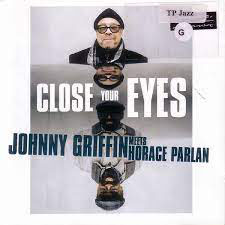 My favorite tenor saxophonist is Johnny Griffin, who I had the great pleasure of hearing over twenty years numerous times when he would come to Chicago from France to be with his great friend Joe Segal and play at Joe’s club, The Jazz Showcase. On the album Close Your Eyes by Johnny Griffin Meets Horace Parlan. Griffin’s tenor is recorded close-up, so all the nuances of his gorgeous tonality and the little details of his beautiful phrasing on different melodies can be heard in a pristine manner. The DAC3.1/II Balanced presented this music with breathtaking purity that rendered the most believable illusion of him playing in front of me I have ever had in my listening space. Another sonic trait of this DAC, on display with this recording, is the ability to create a holographic image of individual players in a sense of real space.
My favorite tenor saxophonist is Johnny Griffin, who I had the great pleasure of hearing over twenty years numerous times when he would come to Chicago from France to be with his great friend Joe Segal and play at Joe’s club, The Jazz Showcase. On the album Close Your Eyes by Johnny Griffin Meets Horace Parlan. Griffin’s tenor is recorded close-up, so all the nuances of his gorgeous tonality and the little details of his beautiful phrasing on different melodies can be heard in a pristine manner. The DAC3.1/II Balanced presented this music with breathtaking purity that rendered the most believable illusion of him playing in front of me I have ever had in my listening space. Another sonic trait of this DAC, on display with this recording, is the ability to create a holographic image of individual players in a sense of real space.
One of the most iconic jazz albums is the classic Blue Note recording of guitarist Kenny Burrell’s Midnight Blue. This is a masterpiece date because of the music and the superb recording done by Rudy Van Gelder. Its overall sonic perspective is warm with rich timbres on all instruments, excellent location of each player. Finally, you get a sense of the ambient sound of Van Gelder’s New Jersey located studio, where it was recorded in 1967. The Audio Note DAC3.1/II Balanced transported me into that space in a way that connected me with this music in an intimate manner. I sat through the whole album transfixed and connected emotionally with this band/music to the point I lost all track of time.
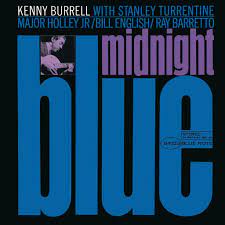 You might be thinking that with what information I have shared so far that the Audio Note DAC3.1/II Balanced has excellent beauty of tonality/color, allows you to connect to the music emotionally, and has amazing abilities with spatial dimensions. Wonderful, but what about Macro-dynamics, bottom-end control and extension, and the quality of its presentation of high frequencies regarding splash/air/decay? When I cued up the famous Mercury Living Presence recording of Antal Dorati conducting the London Symphony Orchestra on Beethoven Symphonies Nos. 5 and 6 “Pastoral,” the DAC was able to effortlessly deliver the power of the full crescendos into my acoustic space with absolute control of the bottom end frequencies. The string section’s playing of high notes was tonality spot-on and was airy with great delicacy and micro-detail.
You might be thinking that with what information I have shared so far that the Audio Note DAC3.1/II Balanced has excellent beauty of tonality/color, allows you to connect to the music emotionally, and has amazing abilities with spatial dimensions. Wonderful, but what about Macro-dynamics, bottom-end control and extension, and the quality of its presentation of high frequencies regarding splash/air/decay? When I cued up the famous Mercury Living Presence recording of Antal Dorati conducting the London Symphony Orchestra on Beethoven Symphonies Nos. 5 and 6 “Pastoral,” the DAC was able to effortlessly deliver the power of the full crescendos into my acoustic space with absolute control of the bottom end frequencies. The string section’s playing of high notes was tonality spot-on and was airy with great delicacy and micro-detail.

As I have stated on numerous occasions, there is no “BEST” in high-end audio. There are many fine pieces of gear on the market at different price brackets. Without a doubt, personal taste, system synergy, and the acoustic environment are all factors that lead to what a listener finds attractive or unpleasant in their experience of music being reproduced in a two-channel system. With all that stated, my take on the Audio Note DAC3.1/II Balanced, which is embedded with a tremendous amount of experience with numerous digital front ends, is that regardless of price, this DAC far surpassed all other DACs I have ever had in my system in for review.
Mr. Qvortrup’s personal taste on how he “hears” music must be a sonic clone of my own experience–for it’s the same thing I desire in my reference system. The Audio Note DAC3.1/II Balanced rendered extraordinary musicality with analog-like liquidity, a sense of “aliveness,” yet it relaxed me and emotionally drew me into the music. It produced the closest illusion of real music I have yet experienced in my system. Its build quality is impeccable, and I believe it is reasonably priced, though expensive, and competes with DACs that cost significantly more. I’m curious about Audio Note’s other higher level and much more costly digital components. However, the DAC3.1/II is not leaving my home for all the reasons stated above! Simply put, it’s the finest DAC I have ever heard in my system and is now my new reference.


terry london
Specifications:
Price: $12,068.36
INPUT RCA 75Ohms SPDiF
XLR 110 Ohms AES/EBU
OUTPUT IMPEDANCE 600 Ohms, Balanced or Single Ended
REFERNCE OUTPUT 3.2V RMS
CHANNEL BALANCE Less than 0.2dB
VALVE COMPLEMENT
2 x ECC82 / 5814a
1 x ECL82
1 x 6X5
FUSE RATING 1.25A anti-surge (110 / 120V supply)
500mA anti-surge (220 / 240V supply)
UNIT WEIGHT 22 KG
Audio Note (UK) Ltd,
Viscount House,
Units C, D & E, Star Road,
Star Trading Estate,
Partridge Green,
West Sussex,
RH13 8RA
United Kingdom
Tel: +44 (0) 1273 830800
TJ’s Associated Equipment:
Sources: Mhdt Lab Orchard & Balanced Pagoda
Pass Labs DAC-1
Bricasti Design M3
Jay’s Audio MK-II transport
CEC -3 belt-driven transport
Amplification:
Coda 07x preamplifier
Coda # 16.0 amplifier
SPL Elector preamplifier
SPL s/800 amplifier
Threshold 550e amplifier
Aric Audio Motherload MK-II preamplifier
Pass Labs XA-25 amplifier
Linear Tube Audio reference preamplifier
Loudspeakers:
NSMT Loudspeaker Model 100
Tekton Design Ulfberth & Perfect Set
NSMT Loudspeaker 20 Armada
Accessories:
Full loom Black Cat 3232 IC’s & speaker wire- Digit 110 AES/EBU
Kirmuss Adrenaline speaker wire
Krolo Design reference rack & footers
Puritan Audio Labs conditioner & grounding box
Audio Archon power cords
One thought on "Audio Note DAC3.1x/II Balanced by Terry London"
Leave a Reply
Stereo Times Masthead
Publisher/Founder
Clement Perry
Editor
Dave Thomas
Senior Editors
Frank Alles, Mike Girardi, Russell Lichter, Terry London, Moreno Mitchell, Paul Szabady, Bill Wells, Mike Wright, and Stephen Yan,
Current Contributors
David Abramson, Tim Barrall, Dave Allison, Ron Cook, Lewis Dardick, John Hoffman, Dan Secula, Don Shaulis, Greg Simmons, Eric Teh, Greg Voth, Richard Willie, Ed Van Winkle, Rob Dockery, Richard Doron, and Daveed Turek
Site Management Clement Perry
Ad Designer: Martin Perry








Hi Terry,
I have the same DAC and was wondering if have experimented
with other tubes than those supplied by the manufacturer?